The infrastructural and construction industry is evolving rapidly to enhance the overall quality of life of people. Unique architectural wonders or just the way homes are built influence the standard of living and the overall safety of people. One of the key features of diverse architectural structures is their sturdiness, durability, strength, and integrity. Central to this idea is the material cement.
Post your Requirement
Cement is an essential building material that serves as a binding material to ensure your building stands the test of time with safety and durability. It is an indispensable component of construction projects worldwide. However, not all projects require the same type of cement for their development and integrity. This is why there is a wide variety of options in cement based on their specific features, capabilities, and effectiveness in diverse applications.
What is Cement?
The material serving as the backbone of the modern construction industry, cement is a powdery, fine, grey substance that helps to bind the different materials together and impart strength to the structures. The cement is created with a meticulous combination of a variety of raw materials such as chalk, clay, iron ore, limestone, shale, silica, alumina, calcium, and numerous others before heating it at high temperatures to promote the formation of a solid material called clinker. This clinker is then ground into a fine powder to create cement. This is a complex process that requires the supervision of professionals, and the composition of the cement should also be considered to meet the specific quality and application requirements.
What Are The Properties Of Cement?
Cement is the key binding material that is widely used in the construction industry due to its effectiveness in ensuring the long-term durability, strength, and stability of the building. They come with several essential properties that are defined as follows:
- Fineness: Fineness refers to the size of the particles that make up the cement. The fineness of the cement can be tailored by adjusting the grinding of the clinker, as the finer cement ensures greater surface area for hydration, resulting in faster strength development.
- Soundness: Soundness refers to the ability of the material of cement to resist shrinking upon hardening. The cement should be able to retain its volume after setting and resist the concerns of cracking or expansion. The soundness of the material is tested using the Le Chatelier method and the Autoclave test, which determines how sound the material is.
- Consistency: The consistency of the cement refers to the viscosity of the paste or its ability to flow. You need the right amount of water to create a cement paste that is of standard consistency and is not too dry or too wet.
- Strength: The strength is measured in three main categories, the compressive strength, tensile and the flexural strength that are considered to assess the durability and performance of the cement after an elongated period of time.
- Setting Time: The setting time of the cement is defined by the amount of time required for the concrete paste to lose its plasticity and go into a plastic state. The initial setting time is usually more than 30 minutes. The final setting times refer to the time required for the plastic state to go into fully harden.
- Heat of Hydration: When water comes in contact with cement, there is an amount of energy generated that is called the heat of hydration. It is one of the critical factors in the curing of concrete, and high heat can cause the mass concrete to crack.
- Loss of Ignition: This is the process that includes the measuring of the change in weight of the cement sample after it has been heated. This is an essential component in the determination of adulteration in the cement due to transportation or other factors.
- Bulk Density: Bulk density typically refers to the mass per unit of the cement in a definite volume. You should also consider the consistency in the color of the material for superior performance.
- Specific Gravity: The specific gravity or the relative gravity are the terms that mean the ratio of the mass of the cement to the mass of the reference material, i.e., usually water. It should be around 3.15, and it plays an important role in the mix design calculations.
What Are The Common Types Of Cement Used in India?
There is a diverse range of options in building materials when you plan to build a home or any other space. And so in cement. It comes in various types and grades to meet the specific requirements and needs of construction projects. You need to have a brief understanding of the different types of cement to understand which will suit your needs best. Some of the common types of cement used in the Indian construction industry include the following:
1. Ordinary Portland Cement (OPC)
The OPC cement is one of the most widely used types of cement all over the globe. This is a kind of cement that is manufactured by grinding clinker and adding a small amount of gypsum to the mixture to be able to regulate the setting time. There are three main popular grades of OPC cement in India, including the OPC 33 Grade, OPC 43 Grade, and OPC 53 Grade. Each grade of OPC cement differs in the levels of compressive strength and is thus used in different applications. The key benefits of using OPC cement include the following:
- OPC cement comes with comparatively higher standards of compressive strength.
- The OPC cement price is highly affordable, making it an attractive investment.
- The material is easy to use and readily available for diverse projects.
Uses Of OPC:
This type of cement can be used for a variety of applications. Some of the common uses of OPC include the following:
- For general construction purposes, such as building dams, bridges, roads, pavement blocks, etc.
- OPC cement can also be used for the manufacturing of grout, wall putty, solid concrete blocks, AAC blocks, and other structures.
- It is also used for reinforced concrete structures.
- It is also used in masonry work for durability and as plaster to give a smooth finish to the walls.
Read Also: Difference Between OPC And PPC Cement
2. Portland Pozzolana Cement (PPC)
This is another cement variation that is typically manufactured by blending the OPC cement along with pozzolanic materials such as fly ash, volcanic ash, silica fume, and even gypsum. This cement comes with a lower carbon monoxide emission rate, making it a relatively eco-friendly choice as compared to other options. The PPC cement offers superior resistance to alkaline-based chemical reactions along with superior standards of durability, thereby making the material suitable for projects with extensive exposure to water. The PPC cement price tag is often an attractive one, with affordable prices. Some other benefits of the material include the following:
- PPC cement offers greater resistance to sulfates and the associated damage.
- It also helps to reduce the heat of hydration, thereby minimising the risk of cracks and damage.
- The carbon footprint of this material is significantly less compared to other options, making it an environmentally friendly choice.
Uses Of PPC:
Among the plethora of applications the PPC cement is suitable for, some common ones include the following:
- It is effectively used in the building of hydraulic structures, dams, and sewage pipes, among other purposes.
- Along with marine structures, it is also used for the manufacturing of masonry mortars, and plastering works.
- It can also be used for mass concrete works or the construction of structures like bridges, roads, etc.
Read In Detail: What is PPC?
3. Rapid Hardening Cement
As the name suggests, rapid hardening cement refers to a kind of cement that hardens and gains strength faster as compared to OPC and other potential options. The material can gain the same level of strength in 3 days that the OPC cement gains in 7 days, even with the same water-to-cement ratio. This type of cement often features an increased lime content and is ground smoothly with a finer process. Therefore, the strength development is faster and more reliable. The key advantages of opting for rapid-hardening cement include the following:
- The RHC cement helps to speed up the construction process due to its fast hardening capabilities.
- It significantly helps to reduce the formwork costs and the costs associated with potential issues with the wet batch.
Uses Of RHC:
There are a large number of applications of the rapid hardening cement due to its superior durability and quality, some of which are as follows:
- It is used in potential road repairs due to the need for quick repair or construction.
- It is extensively used in the manufacturing of precast concrete products.
- It is particularly ideal for projects requiring quick demolding and faster construction.
4. White Cement
The material of white cement is similar to that of OPC, but it is manufactured with raw materials that are free from iron oxide and other colouring agents. The white cement is typically comprised of a higher proportion of lime and clay and is mainly used for aesthetic purposes due to its white and elegant appearance. The white cement price is comparatively higher than other potential options, but its beauty and grace make up for it with perfection. It is the ideal choice if you wish to have a bright, clean, and polished surface and thus particularly ideal for decorative applications, tile manufacturing, and the upkeep of historical monuments. Some of the key advantages of using white cement include the following:
- The white cement comes with superior aesthetic appeal and is thus used for decorative purposes.
- They often offer high reflectivity, therefore a superior appeal and durability.
Uses Of White Cement:
Among the plethora of unique applications of white cement, some of the common ones include the following:
- It is actively used in diverse architectural projects and decorative works such as designing garden paths, floors, swimming pools, and ornamental concrete products.
- Also used in the design of precast panels, where aesthetic appeal is also a priority.
- It is also used for tile grouts and terrazzo flooring due to its role in the overall appeal of the space.
Read In Detail: Glance At The Uses Of White Cement
5. Quick Setting Cement
It is a kind of hydraulic cement that is typically designed to set quickly and thus offer better hardening and strength in a shorter duration of time. In this kind of formulation, the proportion of gypsum is significantly less compared of other options, and the combination of materials accelerates the setting time, thereby making it a great option for quick construction or emergency applications. Some of the key benefits of using the setting cement include the following:
- They offer incredible efficiency in projects where quick construction and rapid work are needed.
- They also help to reduce the overall costs due to reduced timelines and potential concerns.
- This kind of cement is particularly used for time-sensitive projects or ones located near stagnant or running water.
Uses Of QSC:
Some key applications of the material include the following:
- It is particularly effective in underwater structures and in cold and rainy weather conditions.
- It can also be used for the repair of water pipes, sewers, and tunnels.
- It can also be used for the building of dams, roads, and other structures.
Read Also: What is Hydraulic Cement?
6. Sulphate Resisting Cement
There are sulphates in the environment that can impact the durability and strength of the cement over time and can also lead to cracks in the surfaces. Therefore, in areas of high sulphate content, a specialised kind of cement is used to ensure the performance and durability of the structure, which is the sulphate-resisting cement. This kind of cement is manufactured with a closely ground and meticulously mixed combination of calcareous, argillaceous materials and silica, alumina, and iron oxide-bearing materials to resist the damaging effects of sulphate. Some of the key benefits of using this kind of cement include the following:
- The key benefit is that it helps to enhance durability in aggressive environments.
- It helps the surfaces to maintain their appeal for a long time, even in high sulphate content.
Uses Of SRC:
The key applications of sulphate-resisting cement include the following:
- It is particularly effective in regions where the soil has a high sulphide content, which is mostly found in and around coastal areas.
- It can also be used for different types of marine construction projects.
- Another application of these cement bags includes their use in sewage and water treatment plants.
Read in Detail: What is Sulphate Resisting Cement?
7. Low Heat Cement
As the name suggests, low-heat cement refers to a kind of cement that is designed to have a lower heat of hydration in the concrete. This is a type of hydraulic cement that is made by reducing the amount of tricalcium aluminate by 6%, thus allowing the cement to produce less heat during hydration. This is one of the popular types of cement that is often used for mass concrete pour projects where the risks of thermal cracking need to be managed with controlled temperatures. Some of the key benefits of the low heat cement include the following:
- This type of cement helps to minimise thermal stress as it reduces the level of heat produced.
- The material also contributes to the long-term strength and durability of the structures.
Uses Of LHC:
The specialised features of the low-heat cement make it an ideal choice for a variety of applications, some of which include the following:
- It is effectively used in large-scale concrete projects such as dams, massive foundation buildings, and other large mass structures.
- It can also be used in the construction of dams, nuclear power plants, large footings, wind turbine plinths, etc.
8. Blast Furnace Slag Cement
Also known as slag cement, blast furnace slag cement is a kind of hydraulic cement that is typically manufactured by creating a meticulous blend of Portland cement clinker with the granulated blast furnace slag. The slag typically refers to the byproduct of the iron-making process that is ground into a fine powder and then mixed with Portland cement to create a material that excels at workability and durability with a lower heat of hydration. Some of the key advantages of the blast furnace slag cement include the following:
- The material offers a higher standard of durability and performance in the long run.
- The overall environmental impact of the material is also less than compared of other materials.
Uses Of BFSC
The material offers suitability in a variety of applications, some of the common ones include the following:
- Blast furnace slag cement is used in mass concrete projects, such as dams, bridges, roads, and other commercial projects.
- It is actively used in the construction of high-rise buildings and industrial structures.
- It can also be used for diverse purposes in marine projects and applications.
9. High Alumina Cement
Also known as calcium aluminate cement, high alumina cement is manufactured by melting a mixture of lime and bauxite and grinding them with clinker to create a fine powder that offers incredible compressive strength and reliability in the long run. It is a type of rapid-hardening cement that is used in works where concrete is subjected to high temperatures and chemical reactions.
- With great resistance to corrosion due to chemical reactions, this type of cement often offers high early strength and resistance.
- Along with the ability to withstand high temperatures, the material also features the ability of excellent fire resistance.
- The cement price for this type of material is also quite inexpensive, considering the diverse benefits and effectiveness in different applications.
Uses Of HAC:
- It can be effectively used for concrete applications in cold weather.
- It is actively used in the construction of refractory concrete that is designed to withstand high temperatures and harsh chemical environments.
- It is used in the construction of furnaces, chemical plants, kilns and other similar spaces.
10. Coloured Cement
Also known as pigmented cement, coloured cement is a type of hydraulic cement that is mixed with a variety of colours or pigments to achieve a specific colour and aesthetic appeal. In the manufacturing of this type of cement, the professionals incorporate 5% to 10% mineral pigments with OPC to achieve the desired colour for the material. These pigments can be synthetic or natural and can be customised to a variety of shades for specific decoration applications. Some of the key benefits of using the material include the following:
- This material proves to be remarkable in enhancing the overall visual appeal and impressiveness of the surfaces.
- This allows the clients to customise the designs and looks based on specific requirements and preferences.
- The coloured cement brands offer an impressive range of incredible design options, even at affordable cement prices.
Uses Of Coloured Cement:
Some of the key applications of coloured cement include the following:
- This type of material is primarily used for diverse decorative purposes to enhance the aesthetic appeal of the spaces, such as in the construction of concrete flooring, countertops, and paving.
- It is also used for the construction of diverse facade options and even floorings.
Types of Cement Based On Grade
The grade of the cement is a considerable factor in determining the strength and durability of the structures. The grade of the cement indicates its compressive strength (in MPa) after 28 days of setting. You need to choose the right grade of cement that can meet your requirements in terms of strength and performance. The compressive strength of the structures is measured in N/mm2, and the most commonly used grades in India are the 33,43, and 53, and each serves different construction needs.
1. 33 Grade Cement
This is the most basic type of cement that can be used for general construction and plastering work, but it is not that reliable in terms of strength or sturdiness.
- Compressive Strength: 33 N/mm².
- Cement Usage: For general construction like plastering, flooring, and masonry work. It can also be used for non-critical strength projects. It cannot be used for a concrete mix above M20.
2. 43 Grade Cement
This is one of the most widely used grades of cement in India, with its efficacy and reliability for diverse home construction needs. This type of cement offers an impressive standard of strength and durability, along with an affordable cost. It is set in a normal time and ensures long-term strength and sturdiness.
- Compressive Strength: 43 N/mm².
- Cement Usage: It is primarily used for the making of RCC (Reinforced Cement Concrete), for diverse non-structural applications, general civil construction and for the making of plain concrete, plaster, and precast items like tiles. It is suitable for a concrete mix up to M30.
3. 53 Grade Cement
This is a grade of cement that is used for high strength concrete and faster formwork removal with efficiency. This is ideal for projects that come with higher strength needs and is not ideal for small residential work. It also has a lower water-cement ratio.
- Compressive Strength: 53 N/mm².
- Cement Usage: It is the ideal choice for fast track construction purposes, and is best for high-rise buildings, bridges, dams, roads, and other heavy-duty structures. It can also be used for pre-stressed concrete structures and can be used for concrete mixes above M25.
Choose The Right Type Of Cement For Superior Efficiency And Effectiveness
There is a wide range of types and grades of cement in the industry due to their performance and durability in a variety of applications. Each type has its properties and benefits, making it suitable for specific applications. You need to first understand the diverse characteristics and features of the types of cement, their specific applications, and the right construction professionals needed for the project. The careful analysis of each factor will help you make an informed decision and ensure maximum efficiency in the structures.
Read Also: Top 10 Best Cement Companies In India
FAQ’s:
Q:1 What is the difference between concrete and cement?
A:1 Cement is a binding material that is widely used in the construction industry for building sturdy and stable structures. The concrete refers to the mixture of sand, cement, water, and other aggregates to be readily used for construction. Cement is a fine powder that acts as a binding agent, while concrete is a composite material for imparts strength to buildings.
Q:2 What are the 3 grades of cement?
A:2 The three most popularly used grades of cement are the 33,43, and 53, and each comes with its strength and properties and is used for different construction needs.
Q:3 What is cement made of?
A:3 Cement is a binding material that is made with a mixture of limestone, clay, and other materials that are heated at high temperatures in a kiln for the production of clinker. This clinker is then blended into a fine powder and mixed with gypsum for the making of cement.
Q:4 What are the 3 main ingredients in cement?
A:4 The three main ingredients of the cement are limestone, clay or shale, and gypsum.
Q:5 Which is better, OPC or PPC?
A:5 Both OPC and PPC cement come with their own set of properties and features and are thus ideal for different applications. OPC cement comes with high early strength and is ideal for fast-paced construction uses, while PPC cement comes with better durability, particularly in harsh conditions, and is thus more commonly used for residential and long-term projects.

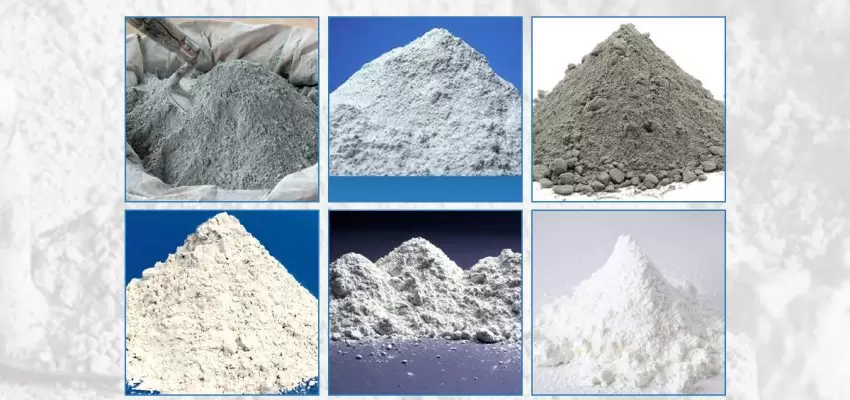
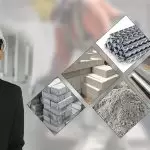
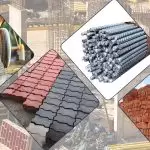
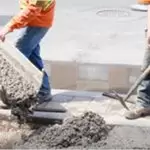
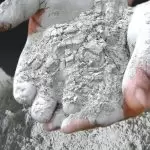

















Post A Comment